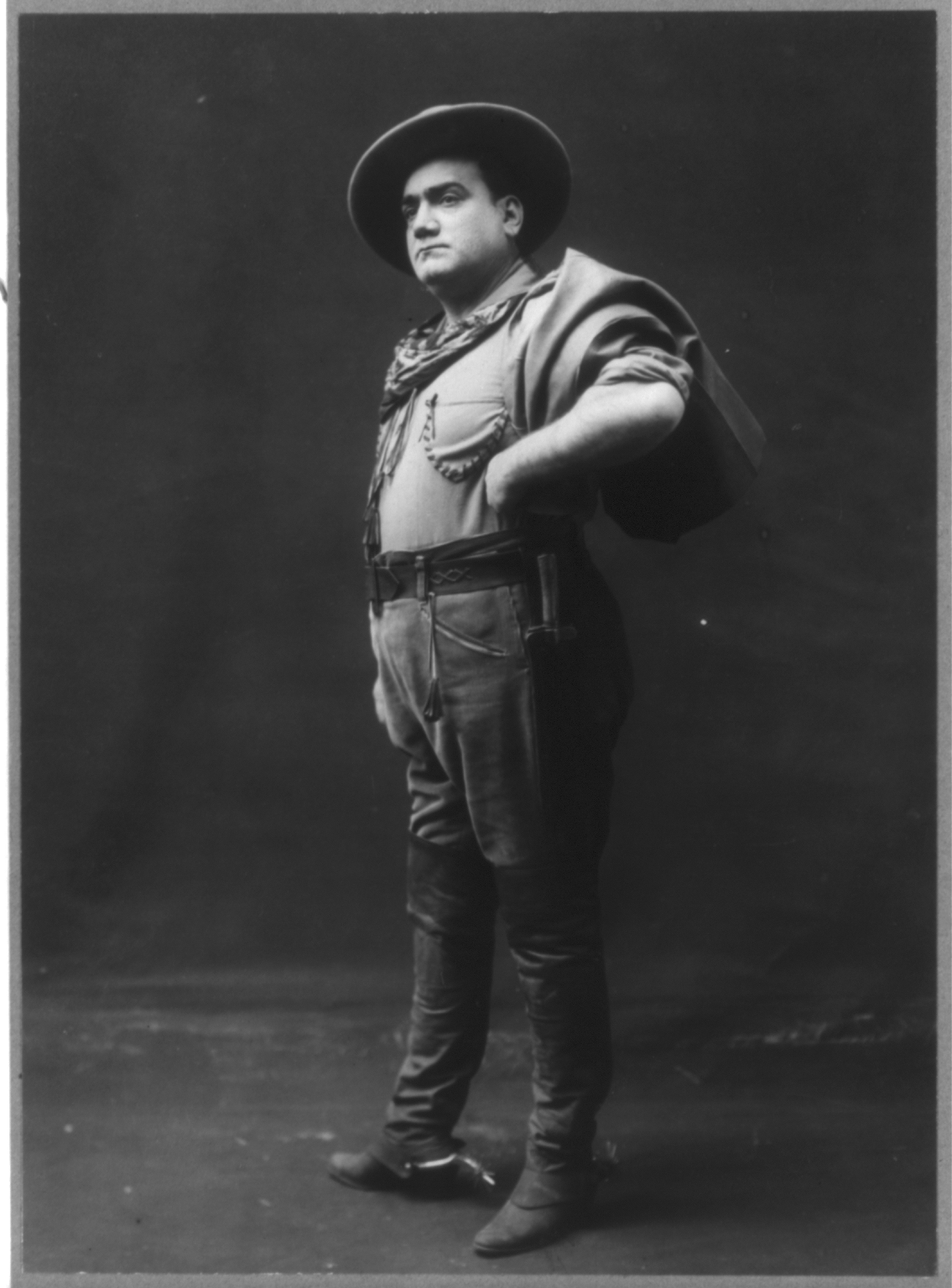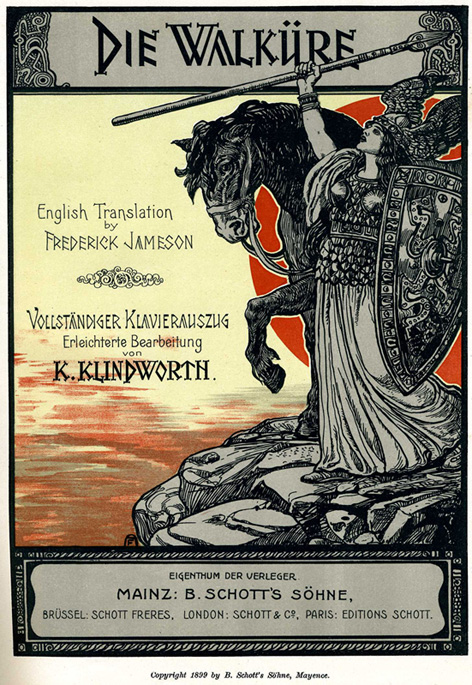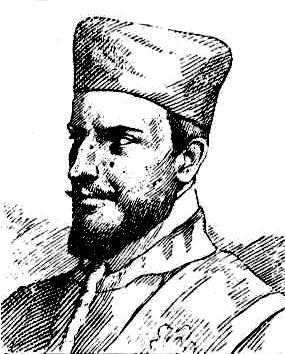|
Gwendolyn Jones
Gwendolyn Jones is an American operatic mezzo-soprano who has had an active career in concerts and operas since the late 1960s. From 1972–1980 she was a resident artist with the San Francisco Opera, and was afterwards a regular performer with the New York City Opera and New Orleans Opera. Life and career Born in Oklahoma, Jones studied singing with Inez Lunsford Silberg at Oklahoma City University. In 1968 she won the Metropolitan Opera National Council Auditions at the age of 19. In 1972 she made her debut at the San Francisco Opera (SFO) as Wellgunde in '' Das Rheingold''. She appeared regularly at the SFO over the next eight years, portraying such roles as Albine in '' Thaïs'', Alisa in '' Lucia di Lammermoor'', Anna in '' L'Africaine'', the Charwoman in '' The Makropulos Affair'', Clotilde in '' Norma'', Countess Ceprano in '' Rigoletto'', Curra in ''La forza del destino'', Dryade in '' Ariadne auf Naxos'', Emilia in ''Otello'', Flora in ''La traviata'', Flosshilde in ' ... [...More Info...] [...Related Items...] OR: [Wikipedia] [Google] [Baidu] |
Mezzo-soprano
A mezzo-soprano or mezzo (; ; meaning "half soprano") is a type of classical female singing voice whose vocal range lies between the soprano and the contralto voice types. The mezzo-soprano's vocal range usually extends from the A below middle C to the A two octaves above (i.e. A3–A5 in scientific pitch notation, where middle C = C4; 220–880 Hz). In the lower and upper extremes, some mezzo-sopranos may extend down to the F below middle C (F3, 175 Hz) and as high as "high C" (C6, 1047 Hz). The mezzo-soprano voice type is generally divided into the coloratura, lyric, and dramatic mezzo-soprano. History While mezzo-sopranos typically sing secondary roles in operas, notable exceptions include the title role in Bizet's '' Carmen'', Angelina (Cinderella) in Rossini's ''La Cenerentola'', and Rosina in Rossini's ''Barber of Seville'' (all of which are also sung by sopranos and contraltos). Many 19th-century French-language operas give the leading female role to mezzos, includin ... [...More Info...] [...Related Items...] OR: [Wikipedia] [Google] [Baidu] |
La Traviata
''La traviata'' (; ''The Fallen Woman'') is an opera in three acts by Giuseppe Verdi set to an Italian libretto by Francesco Maria Piave. It is based on ''La Dame aux camélias'' (1852), a play by Alexandre Dumas ''fils'' adapted from his own 1848 novel. The opera was originally titled ''Violetta'', after the main character. It was first performed on 6 March 1853 at La Fenice opera house in Venice. Piave and Verdi wanted to follow Dumas in giving the opera a contemporary setting, but the authorities at La Fenice insisted that it be set in the past, "c. 1700". It was not until the 1880s that the composer's and librettist's original wishes were carried out and " realistic" productions were staged. ''La traviata'' has become immensely popular and is among the most frequently performed of all operas. Composition history For Verdi, the years 1851 to 1853 were filled with operatic activity. First, he had agreed with the librettist Salvadore Cammarano on a subject for what would ... [...More Info...] [...Related Items...] OR: [Wikipedia] [Google] [Baidu] |
La Fanciulla Del West
''La fanciulla del West'' (''The Girl of the West'') is an opera in three acts by Giacomo Puccini to an Italian libretto by and , based on the 1905 play '' The Girl of the Golden West'' by the American author David Belasco. ''Fanciulla'' followed ''Madama Butterfly'', which was also based on a Belasco play. The opera has fewer of the show-stopping highlights that characterize Puccini's other works, but is admired for its impressive orchestration and for a score that is more melodically integrated than is typical of his previous work. ''Fanciulla'' displays influences from composers Claude Debussy and Richard Strauss, without being in any way imitative. Similarities between the libretto and the work of Richard Wagner have also been found, though some attribute this more to the original plot of the play, and have asserted that the opera remains quintessentially Italian. The opera had a successful and highly publicised premiere at the Metropolitan Opera, New York City, in 1910. Neve ... [...More Info...] [...Related Items...] OR: [Wikipedia] [Google] [Baidu] |
Die Frau Ohne Schatten
' (''The Woman without a Shadow''), Op. 65, is an opera in three acts by Richard Strauss with a libretto by his long-time collaborator, the poet Hugo von Hofmannsthal. It was written between 1911 and either 1915 or 1917. When it premiered at the Vienna State Opera on 10 October 1919, critics and audiences were unenthusiastic. Many cited problems with Hofmannsthal's complicated and heavily symbolic libretto. However, it is now a standard part of the operatic repertoire. Composition history Work on the opera began in 1911. Hofmannsthal's earliest sketches for the libretto are based on a piece by Goethe, ' (1795). Hofmannsthal handles Goethe's material freely, adding the idea of two couples, the emperor and empress who come from another realm, and the dyer and his wife who belong to the ordinary world. Hofmannsthal also drew on portions of ''The Arabian Nights'', ''Grimms' Fairy Tales'', and even quotes Goethe's ''Faust''. The opera is conceived as a fairy tale on the theme of lo ... [...More Info...] [...Related Items...] OR: [Wikipedia] [Google] [Baidu] |
Die Walküre
(; ''The Valkyrie''), WWV 86B, is the second of the four music dramas that constitute Richard Wagner's ''Der Ring des Nibelungen'' (English: ''The Ring of the Nibelung''). It was performed, as a single opera, at the National Theatre Munich on 26 June 1870, and received its first performance as part of the ''Ring'' cycle at the Bayreuth Festspielhaus on 14 August 1876. As the ''Ring'' cycle was conceived by Wagner in reverse order of performance, ''Die Walküre'' was the third of the four texts to be written, although Wagner composed the music in performance sequence. The text was completed by July 1852, and the music by March 1856. Wagner largely followed the principles related to the form of musical drama, which he had set out in his 1851 essay ''Opera and Drama'' under which the music would interpret the text emotionally, reflecting the feelings and moods behind the work, using a system of recurring leitmotifs to represent people, ideas, and situations rather than the conv ... [...More Info...] [...Related Items...] OR: [Wikipedia] [Google] [Baidu] |
Faust (opera)
''Faust'' is an opera in five acts by Charles Gounod to a French libretto by Jules Barbier and Michel Carré from Carré's play ''Faust et Marguerite'', in turn loosely based on Johann Wolfgang von Goethe's ''Faust, Part One''. It debuted at the Théâtre Lyrique on the Boulevard du Temple in Paris on 19 March 1859, with influential sets designed by Charles-Antoine Cambon and Joseph Thierry, Jean Émile Daran, Édouard Desplechin, and Philippe Chaperon. Performance history The original version of Faust employed spoken dialogue, and it was in this form that the work was first performed. The manager of the Théâtre Lyrique, Léon Carvalho cast his wife Caroline Miolan-Carvalho as Marguerite and there were various changes during production, including the removal and contraction of several numbers. The tenor Hector Gruyer was originally cast as Faust but was found to be inadequate during rehearsals, being eventually replaced by a principal of the Opéra-Comique, Joseph-Théodore ... [...More Info...] [...Related Items...] OR: [Wikipedia] [Google] [Baidu] |
Giulio Cesare
''Giulio Cesare in Egitto'' (; , HWV 17), commonly known as ''Giulio Cesare'', is a dramma per musica ('' opera seria'') in three acts composed by George Frideric Handel for the Royal Academy of Music in 1724. The libretto was written by Nicola Francesco Haym who used an earlier libretto by Giacomo Francesco Bussani, which had been set to music by Antonio Sartorio (1676). The opera was a success at its first performances, was frequently revived by Handel in his subsequent opera seasons and is now one of the most often performed Baroque operas. The opera's plot is loosely based on historic events during the Roman Civil War of 49–45 BC. Composition history ''Giulio Cesare in Egitto'' was first performed at the King's Theatre in the Haymarket, London on 20 February 1724. The opera was an immediate success. A contemporary wrote in a letter on 10 March 1724: ...the opera is in full swing also, since Hendell's new one, called Jules César – in which Cenesino and Cozzun ... [...More Info...] [...Related Items...] OR: [Wikipedia] [Google] [Baidu] |
The Magic Flute
''The Magic Flute'' (German: , ), K. 620, is an opera in two acts by Wolfgang Amadeus Mozart to a German libretto by Emanuel Schikaneder. The work is in the form of a ''Singspiel'', a popular form during the time it was written that included both singing and spoken dialogue. The work premiered on 30 September 1791 at Schikaneder's theatre, the Freihaus-Theater auf der Wieden in Vienna, just two months before the composer's premature death. Still a staple of the opera repertory, its popularity was reflected by two immediate sequels, Peter Winter's ''Das Labyrinth oder Der Kampf mit den Elementen. Der Zauberflöte zweyter Theil'' (1798) and a fragmentary libretto by Johann Wolfgang von Goethe titled ''The Magic Flute Part Two''. The allegorical plot was influenced by Schikaneder and Mozart's interest in Freemasonry and concerns the initiation of Prince Tamino. Enlisted by the Queen of the Night to rescue her daughter Pamina from the high priest Sarastro, Tamino comes to a ... [...More Info...] [...Related Items...] OR: [Wikipedia] [Google] [Baidu] |
Ormindo
''L'Ormindo'' is an opera in a prologue and three acts by Francesco Cavalli to an original Italian libretto by Giovanni Faustini. The manuscript score is held at the Biblioteca Marciana in Venice,The score has been digitized bIMSLP while a copy of the original libretto has been digitized by the Library of Congress. The opera has set numbers with recitative, and is set in Anfa (Casablanca), in the Mauri kingdom of Fessa (Fez). Performance history ''Ormindo'' was first performed in 1644 at the Teatro San Cassiano, Venice, the world's first public opera house. After its 1644 run, it was probably not revived until 1967 when it was performed at Glyndebourne Festival Opera. The version presented at Glyndebourne was arranged and conducted by Raymond Leppard. The work received its American premiere in 1968 in a performance at the Juilliard School supervised by Leppard. Subsequently it was performed by the Washington Opera Society, using Juilliard's sets and Costumes. Singers were as fo ... [...More Info...] [...Related Items...] OR: [Wikipedia] [Google] [Baidu] |
Luisa Miller
''Luisa Miller'' is an opera in three acts by Giuseppe Verdi to an Italian libretto by Salvadore Cammarano, based on the play ''Kabale und Liebe'' (''Intrigue and Love'') by the German dramatist Friedrich von Schiller. Verdi's initial idea for a new opera – for which he had a contract going back over several years – was rejected by the Teatro San Carlo in Naples. He attempted to negotiate his way out of this obligation and, when that failed, Cammarano came up with the idea of adapting the Schiller play, with which Verdi was familiar. The process was set in motion, with Verdi still living and working on initial ideas from Paris, where he had been living for almost two years before moving back to his home town of Busseto in the summer of 1849. It was from there that he wrote the music and traveled to Naples for rehearsals. The first performance was given on 8 December 1849. This was Verdi's 15th opera and it is regarded as the beginning of the composer's "middle period".Parke ... [...More Info...] [...Related Items...] OR: [Wikipedia] [Google] [Baidu] |
Madama Butterfly
''Madama Butterfly'' (; ''Madame Butterfly'') is an opera in three acts (originally two) by Giacomo Puccini, with an Italian libretto by Luigi Illica and Giuseppe Giacosa. It is based on the short story "Madame Butterfly" (1898) by John Luther Long, which in turn was based on stories told to Long by his sister Jennie Correll and on the semi-autobiographical 1887 French novel '' Madame Chrysanthème'' by Pierre Loti.Chadwick Jenna"The Original Story: John Luther Long and David Belasco" on columbia.edu Long's version was dramatized by David Belasco as the one-act play '' Madame Butterfly: A Tragedy of Japan'', which, after premiering in New York in 1900, moved to London, where Puccini saw it in the summer of that year. The original version of the opera, in two acts, had its premiere on 17 February 1904 at La Scala in Milan. It was poorly received, despite having such notable singers as soprano Rosina Storchio, tenor Giovanni Zenatello and baritone Giuseppe De Luca in lead roles ... [...More Info...] [...Related Items...] OR: [Wikipedia] [Google] [Baidu] |
Tancredi
''Tancredi'' is a ''melodramma eroico'' ('' opera seria'' or heroic opera) in two acts by composer Gioachino Rossini and librettist Gaetano Rossi (who was also to write ''Semiramide'' ten years later), based on Voltaire's play ''Tancrède'' (1760). The opera made its first appearance at the Teatro La Fenice in Venice on 6 February 1813, and because ''Il signor Bruschino'' premiered in late January, the composer must have completed ''Tancredi'' in less than a month. The overture, borrowed from ''La pietra del paragone'', is a popular example of Rossini's characteristic style and is regularly performed in concert and recorded. Considered by Stendhal, Rossini's earliest biographer, to be "high amongst the composer's masterworks", and describing it as "a genuine thunderbolt out of a clear, blue sky for the Italian lyric theatre," his librettist Gaetano Rossi notes that, with it, "Rossini rose to glory".Rossi, in Osborne, Richard 2007, p. 199 Richard Osborne proclaims it to be "his f ... [...More Info...] [...Related Items...] OR: [Wikipedia] [Google] [Baidu] |








